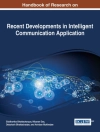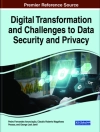Protecting computer networks and their client computers against willful (or accidental) attacks is a growing concern for organizations and their information technology managers. This book draws upon the author’s years of experience in computer security to describe a set of over 200 "rules" designed to enhance the security of a computer network (and its data) and to allow quick detection of an attack and development of effective defensive responses to attacks. Both novice and experienced network administrators will find this book an essential part of their professional "tool kit." It is also essential reading for a corporate or organization manager who needs a solid understanding of the issues involved in computer security.Much literature is available on network and data security that describes security concepts, but offers so many different solutions to information security problems that it typically overwhelms both the novice and the experienced network administrator. This book presents a simple set of rules important in maintaining good information security. These rules or best practices are intended to be a recipe for setting up network and information security. This manual will take the mystery out of configuring an information security solution and provide a framework which the novice as well as experienced network administrator can follow and adapt to their network and data environment. * Provides practical, "battle tested" rules and guidelines to protect computer networks against different forms of attack* Covers both network and client level attacks, including attacks via the internet and damage to the physical hardware of a network
George L Stefanek
Information Security Best Practices [PDF ebook]
205 Basic Rules
Information Security Best Practices [PDF ebook]
205 Basic Rules
Dieses Ebook kaufen – und ein weitere GRATIS erhalten!
Sprache Englisch ● Format PDF ● ISBN 9780080491547 ● Verlag Elsevier Science ● Erscheinungsjahr 2002 ● herunterladbar 6 mal ● Währung EUR ● ID 2258788 ● Kopierschutz Adobe DRM
erfordert DRM-fähige Lesetechnologie












